
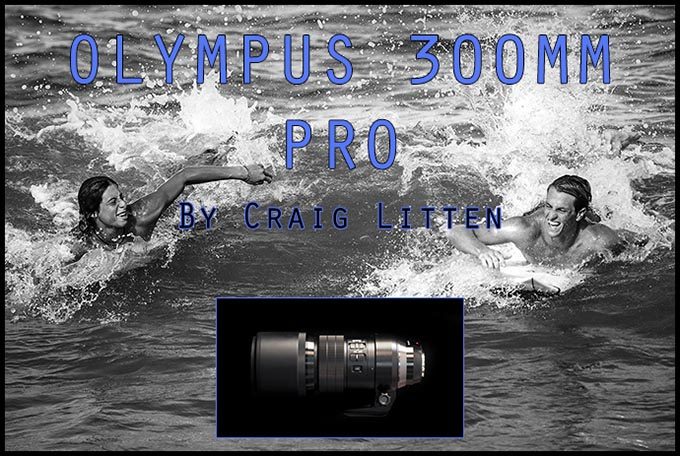
The Olympus 300mm Pro F/4 Official Lens Review
by Craig Litten
You can buy the Olympus 300mm F/4 Pro HERE.
Intro
A 600mm lens is the lens we all dream about. It’s the crème de la crème, the one that makes people drool, the one that when carrying it people ask, “Are you a professional?” I think it’s safe to say that just about everyone who gets into photography dreams of one day owning the big daddy of them all, a telephoto lens like the 600mm.
600mm is the preferred focal length for wildlife and sports photography—and anything else that you can’t get close enough to. With wildlife we know that animals are naturally afraid of humans and keep their distance, thus the need of a super-telephoto lens. But when it comes to sports, we have logistics to deal with like sidelines and size of venue, etc. For instance, in baseball center field is a long way away from the position of the photographer, so the photographer needs a long lens like a 600mm to get close enough to grab a shot of the center fielder snatching a would-be home run near the top of the fence at 400 feet.
The Olympus at 300mm (Pen-F) giving you a 600mm equivalent focal length.
But you say: This is the Olympus 300mm f4 you are reviewing, why do you keep calling it a 600mm? Well, 300mm is the lens’ actual focal length, but with the 2x crop factor of a Mirco Four Thirds camera, the 35mm equivalent focal length is 600mm. It may not have the same shallow depth-of-field as a true 600mm on a full frame camera, but this lens is a true f4 lens (as far as light gathering is concerned), and its actual focal length, when factoring in the 2x crop, becomes 600mm. So, from this point forward I will be referring to this Olympus 300mm f4 Pro lens as a 600mm. Because when you’re out in the real world shooting with it, you will be framing your subjects as if it was a true 600mm lens, and you’ll have to get way back to fit whatever it is you are trying to photograph in the frame, and it does take some practice.
Try this on for size. The Sony below will get you 70-200mm. The Olympus will get you 600mm f/4 (equiv) and the Canon, also 600mm f/4. Here is where M 4/3 shows it’s massive size advantage.
For instance, if you had three cameras next to one another in a row; the first being a Canon 600mm f4 lens on a 5D MkIII (on the left), with a Sony RX10 III zoomed all the way out to its longest focal length—a 600mm equivalent (on the right), and placed the Olympus E-M5 MkII with the Olympus 300mm f4 Pro lens attached (in the center), whatever object you are photographing should be exactly the same size when viewing it on the back of each camera.
Who in the World Needs a 600mm Lens Anyway?
Personally, I am pretty amazed that Olympus released this lens. The fact that it’s currently on backorder here in the US seems to give credence to its success. But make no mistake, it’s an exotic piece of glass to be sure. It’s also outside the normal kit that most people would buy, which in my opinion would be between the 24mm (35mm equivalent) to 200mm or 300mm (35mm equivalent). Traditionally, going back to the film days, very few photographers ever purchased lenses wider than 20-24mm (35mm equivalent), but today with the advent of digital, a vast array of sensor sizes allowing smaller lens design, plus computer aided lens designs, super wide lenses are becoming much, much more common. And fewer still ever purchased a lens longer than 300mm, but things are changing. Because of the aforementioned mentioned, it is now feasible to make cameras like the Sony RX10 III with its 24-600mm (35mm equivalent) lens, the amazing Nikon 1 Nikkor 70-300mm zoom (190-810mm in 35mm equivalent), the Panasonic Leica 100-400mm zoom (200-800mm in 35mm equivalent) and this Olympus 300mm (600mm in 35mm equivalent).
So who is this lens for? Well, as mentioned above this lens is certainly for wildlife and sports photographers, which I think will be the main user base who will purchase it, but it’s certainly not limited to those types of photographers. Because of the current lack of DSLR-like focus tracking in most mirrorless cameras, I think this lens’ greatest potential is yet to be discovered.
To be fair though, I am testing it with Steve’s little Pen F. My hunch though, is that the recently announced Olympus OM-D E-M1 Mark II will close the gap between mirrorless and DSLR-level focus tracking. Who knows, it may even match it. But I don’t think the limitation is in the lens, but in the bodies. In other words, I think the lens will focus just as fast as a given camera body would allow it to. So as the years pass and mirrorless technology grows, this lens will be able to keep up. Single focus accusation, by the way, is lighting fast and instant—no hesitation (on the Pen F). If I had to guess from what I’m currently seeing in the mirrorless market, mirrorless camera’s focus tracking limitation will not be a factor in the next two years. So those who purchase this lens now will be making a solid investment knowing that focus tracking will continue to improve and most likely match anything offered by all but the top pro DSLR cameras like the Canon EOS 1D X-series and the Nikon D5, D6, etc.
Because this lens is so small and compact compared to an actual full frame 600mm f4 lens, it’s one that you can carry around as easily as any full frame 70-200 f2.8, with which it compares with very well in size and weight. I included a photo of it next to my Sony FE 70-200 f4 to give you a better idea of its size.
The Sony 70-200 f4 is very close in size to its Canon or Nikon counterparts also in case you’re more familiar with them. The size of this lens alone opens it up to so many more photographers outside the camp of wildlife or sports. If you’ve already built up your m43 lens kit and have the basics covered, and you want to get closer, this is lens you’re looking for. Or if you just love telephoto lenses, you’re in for a real treat as very few photographers have ever had the chance to shoot with a lens of this focal length. This is not a lens you’d keep in your bag everyday though, but I feel that it fits in more as another tool in your photo toolbox to be used when it’s needed. Just like a flash, tripod or a fisheye lens. You have it when you need it, but it won’t be used everyday like lenses that cover the 24mm to 200mm (35mm equivalent) range—the bread and butter lenses.
Also, the Olympus 300mm f4 Pro would be a great alternative for dedicated DSLR shooters who many have never considered mirrorless, and who desire a super telephoto lens in a smaller, lighter package but don’t want to sacrifice image quality (meaning lens quality—as this lens is equal in quality with any top-of-the-line lenses from other manufacturers). This, along with the Olympus 7-14mm (which I’m reviewing next) may just be the ticket as an alternate camera kit to compliment your current DSLR system. And it won’t take up a lot of room.
Build, Construction & Design
What is the build quality like? Think: Sherman M4 Medium Tank-like. Or in the photo world, think Leica R lenses or old-school, manual focus Nikon AIS lenses. It’s that good.
A few decades ago I was in downtown Homestead, Fla., just south of Miami toward the Keys. While walking around I stumbled upon a very nice camera store (I doubt that it still exists), and bumped into a guy who was coming out of the store. He had an old manual AIS Nikkor zoom lens that had been shot with a powerful handgun at close range (I don’t remember how or why it happened) and he wanted to show it to me. When I looked at the lens I noticed that it had a nice size “dent” in it, that’s it. The most amazing thing about this was that the lens still worked perfectly. In my opinion, the Olympus 300mm f4 Pro lens is in that same realm of quality, and just may be able to take a bullet and keep on ticking. OK, so we just added combat photographers to the mix of who this lens may be for. Wildlife photographers, check; sports photographers, check; combat photographers, check.
The surface of the lens is silky smooth and handles fingerprints really well. In fact, it’s so smooth that if you are like me and decide to remove the tripod collar, you must take extra care when mounting and un-mounting the lens as to not let it slip from your fingers, as it’s a tad bit slippery. But shooting with it feels great as it just glides into your hand.
The focus collar is metal, as is the entire lens including, of course, the mount. The focus ring has a very nice grippy surface too. This is especially helpful when manually focusing of course. If you have used or own any of the other Olympus Pro series lenses, you will immediately be familiar with how nice it is.
I’m sure that most of you are familiar with the Auto Focus/Manual Focus Clutch mechanism of the other Olympus Pro lenses, well this lens uses the same implementation. I personally love the idea of this feature, and feel that it’s a real necessity especially on the wider prime lenses where you may choose to zone focus. The biggest benefit to this is instant manual focus override in cases where your focus gets fooled. You simply pull back and turn. Probably the greatest feature of this is that even though this is a focus-by-wire lens, Olympus choose to add hard stops at either end just like the old manual focus SLR lenses. This is a wonderful feature and actually fools your senses into thinking that you are shooting with a manual focus lens. The focus is, as they say, buttery smooth, with no discernible lag.
On the Pen F it’s amazingly realistic feeling and precise. The one downside of the clutch mechanism is that I think that it needs to be stiffer, if possible, to keep one from accidentally activating it. Many times I accidentally bumped it, went to take a picture, and found the camera not responding. I then realized that it was in manual focus mode and therefore missed the opportunity. This might sound like a small thing, but if you’re a working pro, this could mean you missed a very important shot. Perhaps, on larger lenses as this, Olympus could add a locking mechanism. But the downside of that is that it could negate the whole purpose of the clutch mechanism in the first place.
The Cool Stuff
Olympus went all out with this lens, so I want to mention a few very cool features that you may not already know about. First up is the fact that the tripod foot has an ARCA-Swiss compatible tripod foot built in. Amazing! So if you are using an ARCA-Swiss type tripod head, such as those made by Really Right Stuff, etc., you won’t need to slap another lens tripod plate onto you lens because it’s built in. This is not only super convenient, but can save you anywhere from $65 to well over $100. If you have another brand/style of tripod head or plate, no problem, as you simply attach it to the 1/4-20 thread on the bottom of the tripod mount. Secondly, the lens has an extra assignable Fn (L-Fn) button on it (like Sony). It can be used as a focus hold button when in continuous auto focus, or can be assigned to one of many other customizable functions of your choosing.
Finally, for those of you who won’t be mounting the lens to a tripod often, and want to remove the tripod collar altogether, which is quick and easy to do, you can purchase the Olympus DR-79 Decoration Ring. What?! This is amazing and unheard of attention to detail in my opinion. What’s a decoration ring? The decoration ring slides into place to “fill” the spot left vacated by your tripod collar to make the lens look more ascetically pleasing. How cool is that?! Your lens will now look great with or without the tripod collar, and no more embarrassing moments with your Canon or Nikon friends.
FULL SIZE: CLICK IT TO SEE (PEN-F)
Finally, the lens meets the usual expectations for those who have owned such telephoto lenses before, such as a manual Image Stabilization On/Off switch, and a Focus Limitation switch with three different settings. 1.4-4m, 1.4m to infinity, and 4m to infinity. This is very helpful when you know you’ll be shooting subjects farther away than normal or close up, as it limits the travel distance of any possible focus hunting. And the lens hood is not only supplied with the lens, but it’s built in and implemented very well. It appears to be constructed of hard plastic, is well made and has knurling on the edge, similar to the focus ring, for easy gripping when turning it. It simply slides out into place, and turns to lock. It’s as simple as that. The hood stays firmly locked too until you decide to turn and slide it back into place for storage. It’s so well designed that it barely adds any circumference to the lens, so packing it into your camera bag will be easy. A built-in lens hood that is implemented well is an excellent idea, but unfortunately it’s a two-edged sword as some may want to remove it. I know many photographers who choose not to ever shoot with a lens hood, so this might not be everyone’s cup of tea.
Click to see the image with a full 100% crop
Auto Focus & Image Stabilization
The Image Stabilization in this lens is rock-solid, super steady and honestly, probably the very best I’ve seen in any lens I’ve ever used. In one word: Amazing. And remember, I’m using the Pen F, so I imagine it will be even more spectacular on the upcoming E-M1 Mark II. As is, you will have no complaints. Not only does it lock in and activate, but it causes the LCD viewfinder to become super smooth and clear even in very dim light. I have been able to shoot photos with shutter speeds as low as 1/20th of a second, and included a sample of some glassware in my wife’s china cabinet, at night, under extremely low lighting conditions at ISO 3200. To take advantage of this amazing image stabilization, I recommend shooting in High/Silent Mode. This will give you the greatest advantage in getting a perfectly sharp photo even in the worst lighting conditions. Of course, this won’t help if your subject is fast moving, but only for things that are static.
The auto focus is completely silent, or let’s say, very, very inaudible, and in single shot AF mode, it is instant and without hesitation—which is an amazing feat for such a big lens lens. Again, I’m using the Pen F, but there is no hunting or hesitation for single shot mode in good light. There were a few times I struggled with acquiring focus, but I blame the camera, not the lens. As started above, this is a lens that will be as good as the cameras body you’re mounting it to. As for continuous auto focus, it’s a work in progress. I was able to shoot surfing with it, but knowing how to overcome autofocus systems is my job. You can shoot just about anything with any camera/lens combo if you understand that camera’s auto focus system. For instance, if any of you have ever shot with the Canon 5D Mark II, you’ll know right away that it is not a great auto focus system (not until the 5D Mark IIII did it become really great). But I was able to cover night time high school football (think the worst lighting possible coupled with fast action) for a few seasons with that camera. That being said, with the right body and as technology increases, this lens should be able to keep up with a cheetah in full sprint.
Image Quality
Just how good is the Olympus 300mm f4 lens? To me the biggest deciding factor in purchasing a lens is its image quality, this is first and foremost. But many times you have to give a little on certain preferences such as build quality, auto focus speed, size and weight, etc., when purchasing a lens. Fortunately, the image quality with this lens is nothing short of stunning. Olympus hits the trifecta, so to speak, with the 300mm f4 Pro lens, as it has stunning image quality, an incredible tank-like build and instant auto focus. What’s not to like? It’s a fast f4 lens with the 35mm equivalent focal length of 600mm, it is approximately the size and weight of a standard 70-200mm f2.8 lens (so it’s portable), it has a tank-like build, amazing built-in image stabilization, macro-like close focusing ability (4.6 feet) at a very reasonable price (in my opinion—as Olympus didn’t hold anything back) and it features exotic glass with letters like HR, E-HR, ED and Z with MSC (which is all Greek to me).
Comparing focal length only, Canon’s 600mm f4 lens cannot be handheld, has close focusing ability of only just under 15 feet, and cost $9000 more. I know that’s not a fair comparison, but if your main goal is to shoot far-away subjects and bring them close, this mighty little super lens will do just that, and will draw very little attention from people around you. Pull out a big, white Canon super telephoto lens and you’ll draw crowds plus need a monopod to use it, and a case to carry it in. I know this for a fact because I had regular access to a 200 f2, 300 f2.8, 400 f2.8, 500 f4 and 600 f4 in the past as a newspaper staff photojournalist.
As for the image quality, I am quite impressed with it. It draws an image beautifully, is sharp and contrasty, creates smooth, subtle transitions with very pleasant blurred backgrounds. This is a lens that you want to shoot wide open most of the time. In fact, there are few reasons to ever stop it down more than one or two stops. Super telephoto lenses were created to shoot wide open, and this lens is no exception. Fear not, it is excellent right from the get-go, wide open. In fact, most of my sample shots were taken at f4.
From my testing I feel that this lens performs at its very best with closer to medium subjects. One example is photo of the man reading a book on the beach—the text is crystal clear and easily readible.
On the other hand, the shot of the loading docks, which are in my estimation just over a mile away, is incredibly clear. You can easily read the numbers and letters on the boat, shipping containers, crane and tower.
CLICK THE IMAGE TO SEE A 100% CROP EMBEDDED
So again, this piece of glass is a great investment because sensor technology will only get better adding more megapixels and greater resolving power. Shooting subjects far away, like this loading dock or the 100% crop of the boat out in the Atlantic (see photo of boat with license number FL 9610 FN on it below) is what makes owning such a lens so much fun.
100% OOC crop of 600mm
This particular boat was so far away that the naked eye couldn’t make out any of the fine details. But in this 100% crop, you can see who is on board, the name of the boat, the tiny red light on the port side of the boat, the window air conditioning unit, the white two-way radio mic and cord, the type of hat the captain was wearing and the fact that he was wearing a wedding band. Amazing!
If you’re wondering, and image quality is your deciding factor for this lens, you can stop worrying and just order it, you won’t be disappointed. I’ll say it again, the image quality is nothing short of stunning, and with the amazing image stabilization you’ll be able to shoot at almost any shutter speed and in almost any light. I’m afraid to say 3-D like rendering, because that phrase seems to set some people off, but the images have a beautiful depth to them that I didn’t think possible from cameras with such small sensors. Some much liked lenses from top manufacturers are sharp, contrasty and do the job, but leave you feeling flat. Not this lens, as it has some character of its own.
600mm, a whole new way of seeing
As we know 600mm is a very specialized focal length, and if you’ve never shot with such a super telephoto lens before, there will be a fairly steep learning curve, and it may take quite a bit of time to get used to. Many, many times I went to photograph something while testing it and found that I was just too close to my subject. If you’re not used to shooting sports, 600mm is tight and it can be quite challenging to keep up with the action, as well as staying back far enough to give context to your subject matter. My recommendation, should you buy this lens, is to be patient and allow yourself time to adjust. Don’t get discouraged as you will eventually “feel” where you need to be to frame up your subject just like you currently do with your 200mm (equivalent) lens, or your 50mm (equivalent) lens. But on the flip side, it’s a lot of fun, as there is a whole new world out there to discover. If you look at the photo with the pale yellow boat in the background and the light green boat with a dog on it to the left, you’ll see a perfect example. This is a 100% zoom-in and crop from the original photo, but it’s a perfect example of all the things this lens allows you to see that go basically unnoticed with the naked eye because they are just too far away. When I shot this photo, I was on the shore sitting on a rock in the shade just shooting whatever caught my attention as boats and people moved in and out of the frame. With my naked eye, I couldn’t tell there was a dog on the boat, make out what was written on a T-shirt or read what type of engine the boat had. Not until I got home, downloaded the photo and zoomed in to a 100% crop, did I notice all of this. It’s a whole new world of discovery. Secondly, if you look back to the photo of the loading docks and view it full sized, you will notice people wading in ankle deep water to the left of the frame, and that one of the guys is holding a bottle. Amazing detail.
One thing that might double your fun with this lens, or at least make it 1.4x more fun, is using the Olympus MC-14 1.4x Teleconverter as it will give you an astounding 840mm equivalent lens that you can hold in your hand! That’s more fun than a barrel of Leica’s!
Conclusion
Olympus knows how to make glass and build lenses. They have a great legacy and they aren’t a company who knows compromise. Olympus is going all out with their pro lens line, and now have in their lineup: The 8mm f1.8 fisheye (16mm equivalent) which is over a stop faster than the competition—and tiny to boot, the 25mm f1.2 (50mm equivalent) which looks amazing—look out Canon, and the 300mm f4 (600mm equivalent) to round out the primes. In their pro f2.8 zoom range they have you covered from 14mm to 300mm with: The 7-14mm f2.8 (14-28mm equivalent), the 12-40mm f2.8 (24-80mm equivalent) and the 40-150 f2.8 (80-300mm equivalent) which is 100mm closer than the competition. And finally, the newly announced, very practical all-in-one lens, the 12-100mm f4 (24-200mm equivalent) which is the first f4 lens of the bunch. Olympus is on fire! My prediction is that Olympus isn’t finished and has a few more lenses yet to be released in the pro line. By looking at their history, I predict that Olympus will also produce some super fast telephoto lenses. Possibly a 150mm f2 lens (300mm equivalent) and a 300mm f2.8 lens (600mm equivalent) like in their current 4/3rd’s lineup. Let’s also hope they revise the 90-250mm f2.8 lens (180-500mm equivalent). I think that once the camera bodies can match the continuous auto focus ability of a DSLR, this system will be able to compete on the sports field. Of course, they will never match the shallow depth-of-field offered by a full frame DSLR, but keep in mind that until the game-changing Nikon D3 (Canon only had the “S” series full frame cameras at that time which were too slow for sports) was announced in 2007, ALL cameras used in the digital sports world were shot on an APS-C sized chip.
Recommendations
If I were to buy this lens, there is no doubt that I’d get it with the newly announced E-M1 Mark II (with the grip) to take advantage of all that new technology—especially the reported blazingly fast auto focus. There is nothing more fun than shooting a sporting event while having the right tool that can actually keep up with the action. And of all the Olympus bodies available, the E-M1 Mark II should give you the best of everything. If you have an inkling for a super-tele, I don’t think it gets any better than this.
I’m Craig Litten, and I approve this lens.
You can order the Olympus 300mm Pro at the approved and recommended shops below:
PLEASE! I NEED YOUR HELP TO KEEP THIS WEBSITE RUNNING, IT IS SO EASY AND FREEE for you to HELP OUT!
Hello to all! For the past 8 years I have been running this website and it has grown to beyond my wildest dreams. Some days this very website has over 200,000 visitors and because of this I need and use superfast dedicated web servers to host the site. Running this site costs quite a bit of cash every single month and on top of that, I work full-time 60+ hours a week on it each and every single day of the week (I receive 100-300 emails a DAY). Because of this, I could use YOUR help to cover my costs for this free information that is provided on a daily basis.
To help out it is simple, and no, I am not asking you for a penny!!
If you ever decide to make a purchase from B&H Photo or Amazon, for ANYTHING, even diapers..you can help me without spending a penny to do so. If you use my links to make your purchase (when you click a link here and it takes you to B&H or Amazon, that is using my links as once there you can buy anything and I will get a teeny small credit) you will in turn be helping this site to keep on going and keep on growing.
Not only do I spend money on fast hosting but I also spend it on cameras to buy to review, lenses to review, bags to review, gas and travel, and a slew of other things. You would be amazed at what it costs me just to maintain this website, in money and time (250 hours a month, and about $3000 per month).
So all I ask is that if you find the free info on this website useful AND you ever need to make a purchase at B&H Photo or Amazon, just use the links below. You can even bookmark the Amazon link (not the B&H) and use it anytime you buy something. It costs you nothing extra but will provide me and this site with a dollar or two to keep on trucking along.
AMAZON LINK (you can bookmark this one)
B&H PHOTO LINK – (not bookmark able) Can also use my search bar on the right side or links within reviews, anytime.
Outside of the USA? Use my worldwide Amazon links HERE!
You can also follow me on Facebook, Twitter, or YouTube. 😉
One other way to help is by donation. If you want to donate to this site, any amount you choose, even $5, you can do so using the paypal link HERE and enter in your donation amount. All donations help to keep this site going and growing!![]() I do not charge any member fees nor do I (nor will I ever) charge for reviews, so your donations go a long way to keeping this site loaded with useful content. If you choose to help out, I thank you from the bottom of my heart.
I do not charge any member fees nor do I (nor will I ever) charge for reviews, so your donations go a long way to keeping this site loaded with useful content. If you choose to help out, I thank you from the bottom of my heart.

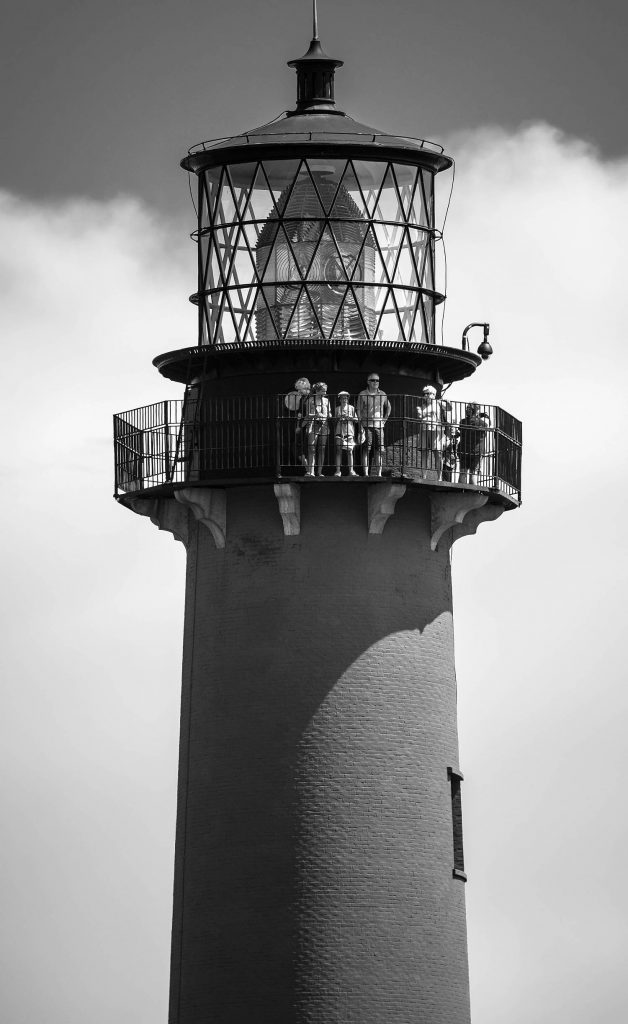


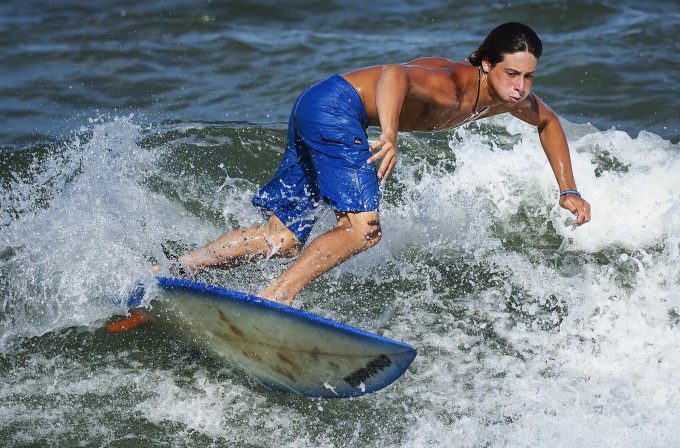

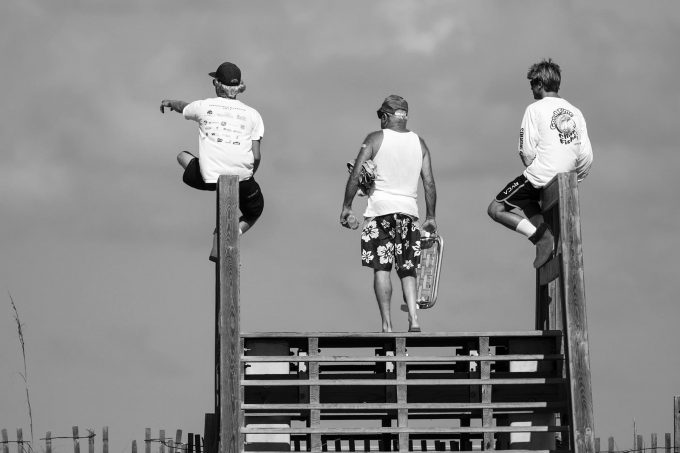


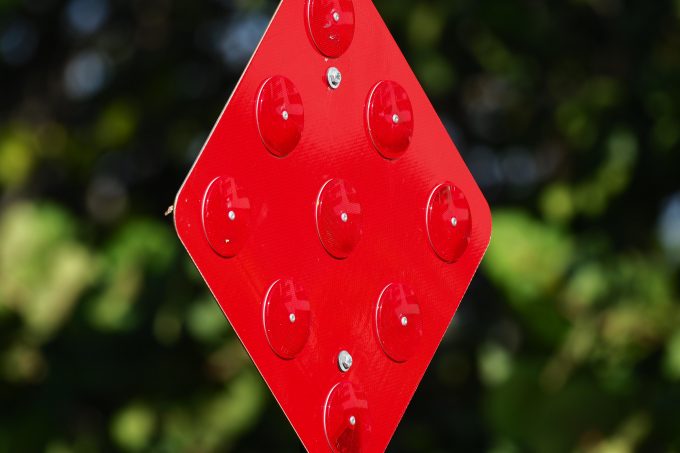






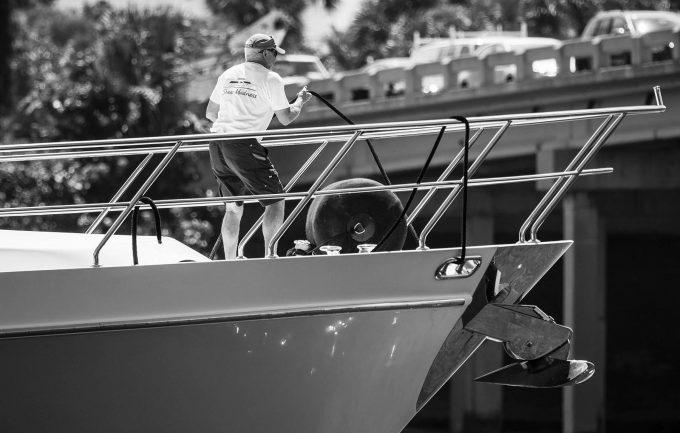
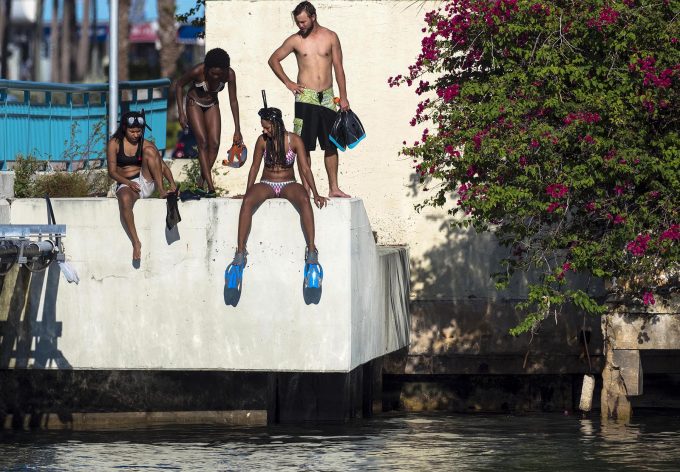
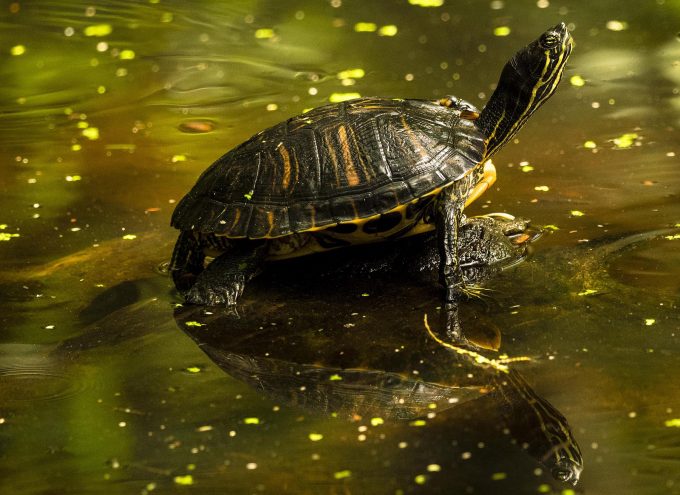



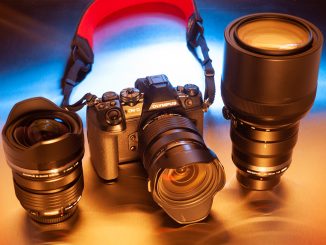

Hi, Steve!
Thank you for the review!
I will test the lens paired with the M1 MkII and maybe the 1.4 TC somewhere around March – April and I am so thrilled about this. I have used the M5 with all the prime lenses available from Olympus (and the 25mm f1.4 from Panasonic) and I was very satisfied with the results (I even used ISO 6400 inside a church that was almost pitch black in some areas). I have used a lot of DSLRs from Nikon, Canon, Sony, Fujifilm and Pentax and after many years of learning photography I ended up believing that there is a system most effective for each of us.So, I ceased to argue with people around me which one is the best. They are all the best providing one is using them properly and for a tailored task.
I do not care too much of bokeh or sensor size and I am concentrating mostly on improving my composition and creating photos worth looking at. It is what is most important to me.
Just as a fun fact, I have been shooting wildlife and nature photography with a Canon 40D and a Pentacon 300mm f4; sometimes with a 2X TC. I admit, the gear is not delivering stunning images, but it does its job for the moment and I believe my photos are good nevertheless.
Thank you for your time!
Best wishes from Iasi, Romania!
The one thing that is lost in all this talk about the Olympus 300 being a 600/4 compared to a Canon lens being “only” a f4 lens, is that many shoot the Canon 600/4 on the APS sensor 1.6x camera like the 7D, so to be fair, if you are calling the lens a 600/4 Olympus and comparing, call the 600/4 canon a 840/4.
What interested me is this review was done with Pen F body. I believe one of Steve’s top 3 bodies. Leica SL and Sony in top 3 too. amazing for a $1200 camera body. And recently did the Oly 1.2 compare to Leica lens with the same Pen F! For those of us shooting no action, no video, no lo light, and no rain 95% of us Pen F is a great value! I’m thinking of trading my EM1 for one.
I found that the Panasonic 100-300 was / is awfully sensitive to shutter shock. And at 300mm it is not the sharpest lens to begin with. You need to stop it down to F8 and use electronic shutter, then the results are MUCH better than wide-open and mechanical shutter. Just my 2 cents. I wonder if cropping on the Sony70-300 will still be better when you compare it that way?
>This lens shot an an EM1 at ISO 200 would give you a very similar IQ and look to a 600mm F8 lens on FF shot at ISO 200!!!
Uh, no; I shoot almost exclusively m43 now but statements like this are simply not true. ISO 200 on m43 does not look like ISO 200 on FF. Neither does ISO 200 on FF look like ISO 200 on MF or ISO 200 on a cell phone look like ISO 200 on m43.
I forgot to mention earlier that I took a Panasonic/Leica 100-400mm on my high Arctic adventure. I was no match for the Olympus 300mm f4.0 Pro. Images with the PL 100-400 were soft in comparison to the Olympus, and the zoom ring on the PL 100-400 is so friggin’ stiff that it was a awful to use. (This was the second version of the PL that I tried; both were unacceptably stiff in zooming.) But, the real killer when comparing the lenses was image quality. Even with the 1.4x teleconverter on the Olympus (resulting in an effective focal length of 840mm), the Olympus images were noticeably more sharp with better contrast. I love my PL 42.5mm f1.2 lens and had hoped the PL 100-400m would have the same quality feel and image quality, but it did not. If you want a telephoto zoom, I highly recommend the Olympus 40-150mm f2.8 which, with the 1.4x teleconverter will give you an 120-420mm f4 lens that has better image quality than the PL100-400mm as well. Plus, the Oly teleconverter works with both the 300mm f4 and the 40-150mm f2.8 lenses.
Great Review. I shot with this lens in the high Arctic this summer and achieved better images of polar bears north of Svalbard than my previous trip shooting a Nikon D3S/600 f4 combination. And, not lugging all that Nikon gear through airports and customs was a welcome benefit of “going small.” By the way, the trim ring that covers the “nubs” when removing the tripod collar come FREE with the 300mm f4 Pro. (It’s an extra, although small, expense option on the 40-150mm f2.8 Pro.) Oh, did I mention that the images with the dual IS available with an E-M1 were fantastic? I agree with your conclusion. Anyone interested in sports, wildlife, or “long reach” telephoto lenses, should run out an buy (or put your name on the list) this lens. And, it works fantastically with the 1.4x teleconverter with virtually no loss in image quality or focus speed.
>>This lens shot an an EM1 at ISO 200 would give you a very similar IQ and look to a 600mm F8 lens on FF shot at ISO 800.
Your statement is just not correct!!!
This lens shot an an EM1 at ISO 200 would give you a very similar IQ and look to a 600mm F8 lens on FF shot at ISO 200!!!
Yes, in the end everything is constant, let me explain that thought.
If you choose the aperture to have the same depth of field, the total amount of light transmitted is always the same.
– 600mm f16 on 35mm transmits the same amount as 300mm f8 an 4/3.
If you choose the aperture to get the same depth of field even the diffraction limit is at the same resolution.
It’s about f8 on 4/3 for 16mp and about f16 on 35mm for 16mp (no precise numbers 😉 )
Therefore the decisions is bigger more expensive system with a bit more freedom in choosing “photographic parameters” vs a smaller more portable system.
I choose the more portable one.
Just some notes:
– in terms of total light transmission the difference between 4/3 and 35mm is smaller then the crop factor due to different aspects of the sensors.
– noise is not entirely linear to sensor size, but it’s the biggest single factor
– from my experience 35mm lenses must be stopped down further to get an overall sharp image, especially at the edges therefore the difference is smaller then those two stops in most cases.
– Full Frame is a marketing buzz word, it’s supposed to imply the otherwise something is missing, every non legacy system not derived from 35mm is by definition full frame and what are those medium format called “over full frame”
Your logic is illogical 😉 because it would have to apply in either direction for larger sensors, or even smaller sensors, including your smart phone, video cameras, medium format cameras, CCTV cameras, etc. I used to shoot with medium format and large format cameras, and my f4 lens on each was still f4. This argument never existed before internet forums, because it’s simply not true. But thanks anyway.
I shoot exclusively with m43’s, but your statement is just not correct. This lens has the exact same light INTENSITY as a FF F4 lens (ie: same amount of light per square inch), but it does not have the same total light gathering capability of an F4 lens because the sensor it is designed for is 1/2 the size as a full frame sensor. Therefore, the actual IQ characteristics of this lens, especially when talking about image noise is what a FF F8 lens would be (if there was a super-duper high quality F8 FF lens).
This lens shot an an EM1 at ISO 200 would give you a very similar IQ and look to a 600mm F8 lens on FF shot at ISO 800. Light gathering must account for the overall size of the sensor as well, Steve. This isn’t to say it is BAD by any means. A FF camera today shooting at ISO800 is super clean already, but as you go up the ISO food chain the image will degrade faster on m43’s and that is absolutely a function of how much light can hit the smaller m43’s sensor versus the larger FF sensor.
Because f/4 is f/4. The ONLY difference would be in the DOF or for some, the Bokeh. The DOF will be that of a 300mm f/4. Light gathering, 300mm f/4. Magnification, 600mm. The most important for most is the light gathering, which is why there are apertures to change in the 1st place. The DOF here can be as shallow as you need, so a non issue. Id take a 300mm f/4 DOF over a 600mm f/4 DOF.
When are reviewers going to stop adjusting the focal length without concurrently adjusting the f-stop when comparing these 300mm f4 lenses to 600mm f4 lenses?
Hey EL, I say stick with your gut, you know what’s best for you. If it’s got Leica’s name on it, it’s got to be good. One benefit of having a zoom is…having a zoom–it’a a varied focal length. When you lose your subject, you can zoom out to find it, and zoom back in. Hope you enjoy and thanks for reading.
Hey James, this is Craig. Here’s a very helpful article by a very reputable source, B&H Photo: https://www.bhphotovideo.com/explora/photography/tips-and-solutions/understanding-crop-factor/bi/19115/kbid/10779
Hope this helps.
Thanks for reading. I think a lot will depend on the E-M1 Mk II’s continuous AF performance. Shooting at the equivalent of 600mm is tight and tracking birds in flight will take practice, but you will adjust. From what the reports at Photokina are saying, the E-M1 Mk II should be able to compete with its speed–I would think much better than the Sony a7rII (and I’m a Sony user). The a6300 would be a better choice over your A7rII. It would give you more megapixels to work with, faster focus tracking and a 105-450 equivalent lens. But it’s still no 600mm, and you will still lose a stop of light. Decisions, decisions 😉
I am a little bit off topic. I took my waiting list off from this lens and get the Leica/Pana 100-400. Zoom out to 400 is good. Sharp enough. No complain on the color department. I bet this lens will lose out on AF speed. So I have a feeling that the grass is greener on the other side and I must admit I am envious. Any consolation out there to convince me to accept this 100-400 or I have to put my name on the waiting list again. Please help.
Since I’m starting to photograph more birds, your review of the Olympus 300 was welcome. A side by side comparison of the Panasonic 100-400 vs the Olympus 300 would be of interest and of course mounted on the new E-M1 mk2 when available.
Just my experience and not scientific but I have gotten better image quality cropping the Sony 70-300 on an A7R2 than with the Panasonic 100-300 on an E-M1 when shooting distant but stationary birds in good light. However, the Olympus 300 would probably do much better. Choosing a kit for birding is not simple. Size, weight, cost, sensor performance, lens speed, flexibility (zoom vs prime), lens performance, and autofocus performance all need to be considered. Thanks for your review on one of the alternatives.
Agreed 100%. This light gathering discussion is pointless.
If you need low light performance, M43 is the wrong system. Unfortunately at 600mm light is always a problem. That is why professionals are willing to lug around those huge 600/4 lenses.
I don’t think “magnification” is the correct word, but I understand your point.
I had the opposite impression. These images have small sensor written all over them. Have a look at some full frame 600/4 photos to understand what I’m talking about.
You lost me at “light gathering”.
We come here to read about and see beautiful photos, not get rehashed marketing spin.
Hi Steve,
To begin with, i have shot with Olympus for thirty years…. Now, and this is not just an issue with olympus, but all of the camera makers of cropped sensors… they double their lens per crop factor, but they don’t adjust the f-stop…. so the f-4 with a max 600 mm factored by the iris, which i don’t know of this lens, but my guess is the f-4 is at the very least an f-8… Your thoughts?
I’m looking forward to testing the a99II. I’m sure a few new lenses will be announced soon. A 35mm pancake would be awesome.
The Rotolight ANOVA Pro rocks from what I see. I own the ANOVA V2 plus two Neo’s, and LOVE the beautiful quality of light. Add a bit more power and flash to the equation and drop the price $1,000, and you have a real winner. If you are a photographer who shoots video too it is a great asset. Or if you prefer to “see” your light and don’t like your subjects to sweat, you should love it.
Great point on old lenses! Manually focusing with the Pen F was a breeze–way easier than back in the film days with the split prism. Thanks Karim!
Thanks for your comments Jeff. Form someone who has shot a lot of sports from high school to pro, you’re going to want an f2.8 lens for high school sports–especially night football and basketball as most are under horrific light. A 600mm equivalent lens is way to close for heigh school football. On the other hand, 300mm is much too short for surfing photography from the shore. But as you said, it debends on the E-M1 MK II AF performance.
This is a 300mm lens but it BEHAVES like a 600mm lens. This is FACT. Your magnification will be that of a 600mm lens, NOT a 300mm lens. So yes, what you get will be the same mag as a 600mm f/4 on a Canon full frame body. That is no myth, it is fact.
Well, the ISO equivalent theory is good on paper but practical nonsense. If ISO 200 feeds the need then what’s the point of going up to 800?? It’s simple – F4 is F4 is F4 and the design focal length is the same the same. All you realistically compare is DOF and focal length across systems. Discussion about light gathering is just for the paper
B
Oops. I meant to say the PF not PE.
Definitely interested in this lens, but I’m still waiting for the price to drop. I’m renting the Nikon D500 and the Nikon 300mm f/4 PE next month. The Nikon 300mm f/4 PE actually weighs half as much as the m.zuiko 300mm f/4. I’m going to do a thorough run through on the Nikon combination, including shooting some high school football games and some surfing.
Then I want to test the m.zuiko 300mm on the new E-M1 II and see which combination works better for sports and action. I’m already in the Olympus camp, so I really want the E-M1 II to kick butt. But the combination of the E-M1 II and the 300mm f/4 needs to be cheaper than the D500 and Nikon 300mm f/4 PE. That combination comes in at $4000. If the Olympus combination doesn’t come in at least a couple hundred dollars less, I think I may need to move to Nikon.
Thanks Ingo! The X-T2 with the Fuji 100-400 would certainly be a great combo and you’d have the zoom advantage, but remember it’s a slower lens starting with an f4.5 aperture. If someone is already in the Fuji system, I wouldn’t recommend jumping ship for the Olympus 300 f4, but this review is more for those already in the system or those considering the system. As always you need to weight the pros and cons. As I eluded to in the review, there is a learning curve to shooting with a lens of this focal length.
Nice to read, Craig. Referring to the size of the lens, i don´t understand why it has to be that large. It´s made for a tiny sensor system.
If you want to compare the Olympus 4/300 to ff, just take a Nikon D810, crop it to 1/2 and use the Nikon AF-S 4,0/300 E PF ED VR. Imagine, that lens has the size of a Nikon 2.8/24-70 and is FF for a price cheaper than the Olympus. You will see a large different in the pictures when it comes to Picture quality. It´s not about sharpness, many lenses are amazingly sharp. It´s about dynamic range. That´s a field where ff ist better, especially the D810 in the highlights.
Or, go with the Fuji X-T2 and a Fuji 100-400. Fast AF, maybe same IQ than the Olympus, but it´s a zoom (important for sports), so it´s just more flexible. The price should be about the same but you will have a larger with the Fuji system on the same high level of the build quality.
In my opinion the Olympus is a great lens and build professional grade, but there are tempting alternatives on the market.
Superb optics. No one could tell that these shots were made with a relatively small sensor.
Even with a 2 stop advantage for FF, I doubt the results would be equivalent. By all accounts, the Olympus 300 f/4 is a very sharp lens, perhaps the sharpest lens they’ve ever produced. The Canon 300 f/4 is probably pretty sharp too, but with the 2X teleconverter, I doubt the Canon would be anywhere near as sharp as the Olympus.
And, unless you need really fast shutter speeds, the Olympus gains several more stops back with its 5+ stops of image stabilization. Even giving the Canon combo 2 stops for stabilization, you can effectively use 5 stops lower ISO for the Olympus lens, assuming moderate shutter speeds (< 1/FL).
On top of that, the direct focus on the sensor eliminates potential calibration issues.
It would be interesting to see a direct comparison if someone had access to both setups.
Cool review, Craig, and thanks for sharing. There are so many good mirrorless systems today, it’s hard to pick a favourite. Olympus certainly won’t come last, that’s for sure.
What’s interesting, just as a footnote, is that if you don’t need AF, you can adapt an old SLR manual focus lens and get that same reach, but for only a few hundred dollars. Or even less.
It won’t be long before sports photographers go for systems like the Olympus. You’d be mad not to. That 600mm trench mortar was necessary back when all you had was 35mm film – there just wasn’t much of an alternative, and the 8-perf frame was already considered too small by some people. But nowadays we have this thing called digital which lets you have smaller lenses and cameras. I wonder if people have heard of it? 😉
Back in the ’90s and before, photographers did appreciate the delicate qualities of faster lenses for portraiture and so on, but DOF was not an article of faith, and neither was it seen as a holy grail. Stanley Kubrick did not shoot at f/0.7 for the DOF (in fact it was difficult to manage). But it’s nothing more than an apologetic or an affectation nowadays. People don’t like it that the DSLR paradigm that they’re married to is getting old.
Of course we all have different tastes. If you can choose between multiple tools which let you do a job, buy what makes you happiest.
“You are wrong about speed. f/4 on this lens is the same exact exposure as f/4 on a Canon 600mm lens.”
If you read my comment properly you would understand the point I was making. All else being equal FF cameras should have a 2 stop ISO advantage over a m4/3. This means you should be able to achieve the same speed with an FF at f/8 as a m4/3 at f/4 whilst maintaining the same level of image quality.
For me a FF 600 mm f/8 vs. a m4/3 300 mm f/4 is a fair comparison.
Heads up everyone, you are buying a 300mm f4 lens, not a 600mm f4 lens. It doesn’t help that these forums perpetuate the myth that the two are equivalent by adjusting the reach and not the f stop.
Here we go again.
We all know the the DOF is equal to f/8 on a 35mm sensor. You are wrong about speed. f/4 on this lens is the same exact exposure as f/4 on a Canon 600mm lens.
In this field of view, many will agree there is no benefit to a shallower depth of field; a bit more in focus is a good thing.
Craig,
I always enjoy your in-depth reviews even if it’s not the system I use. Hopefully there are some new Sony lens reviews in your near future. Also, I would love to hear your opinions on Rotolights new Anova Pro. Thanks again Craig and look forward to your next review.
Greg
Hi Sam, thanks for your comment. You’re probably correct on this, but I never took physics 😉 The bottom line is, it’s a lot of fun to shoot with, the image quality of the lens is fantastic and only held back by current technology. You certainly can’t cheat physics, but about a year ago Apple had a campaign “Shot on an iPhone 6s” or something like that, and displayed huge prints in the local Apple stores. I viewed those prints up close and was simply astonished. They didn’t cheat physics, but it sure looked like they did. I love full frame personally but simply don’t want to carry big DSLR’s any longer as I did for a few decades.
Hi Jim, I totally understand your soft spot for Olympus. Perhaps owning both systems and getting the tools you need from each would work for you. If you like super shallow depth of field, you can get something like a full frame 85mm f1.4, and then cap your full frame system with an m43 600mm equiv. (300mm) lens on one end, and a 14-28mm equiv. (7-14mm) on the other. If I was still shooting sports, I would certainly need a DSLR system to compliment my Sony mirrorless kit because the continuous focus is not quite there yet. Please keep me posted, I’d love to know what you decide.
So sorry Bruce, I agree. I did shoot a vulture but it didn’t make the edit. Honestly, when I used to live on the Gulf coast of Florida, birds were everywhere, but here on the Atlantic side, they are much more elusive.
I don’t subscribe to the size advantage argument for m4/3 systems, you can’t cheat physics… It is true that this lens is equivalent to 600 mm on a FF system, however it is also equivalent to f/8 both in terms of DOF and speed.
Let me explain. With all else being equal an FF sensor in theory should have a 2 stop noise advantage over a m4/3 sensor. This means that the same shutter speed would be achieved (albeit at a higher ISO) with f/8 on FF than f/4 on m4/3 without a degradation in image quality.
If you compare a 600 mm f/8 on FF, the comparison would be quite different. I don’t know of any non-reflex 600 f/8 full frame lenses, but if you used the Canon 300 mm f/4 with 2 x teleconverter, this package would be cheaper and lighter than the m4/3.
I suspect that the Olympus would likely be sharper and the focusing speeds of each would probably depend on the body used. However, this is a much closer and fairer comparison IMO.
Hi Craig thanks for the in-depth review given your background as a former newspaper photog!
I feel your images in your article demonstrate the capability of this lens…not to nit pick…but a few
bird images would have been welcomed given the lenses intended audience.
Cheers
Bruce
Great review Craig, I think you may add to the number of back-orders! I currently don’t have any Olympus or M4/3 kit but I’ve always had a soft spot for Olympus from my OM10 to 1, 2 & 4 from many moons ago. I have to get over my FF hangup (read snobbery), the kit they are producing is stunning and this new E1-II might have me joining the queue. As you rightly point out, a crop factor is not all bad and the IQ in your test shots is stunning.
Thanks for submitting and Steve thanks for posting.